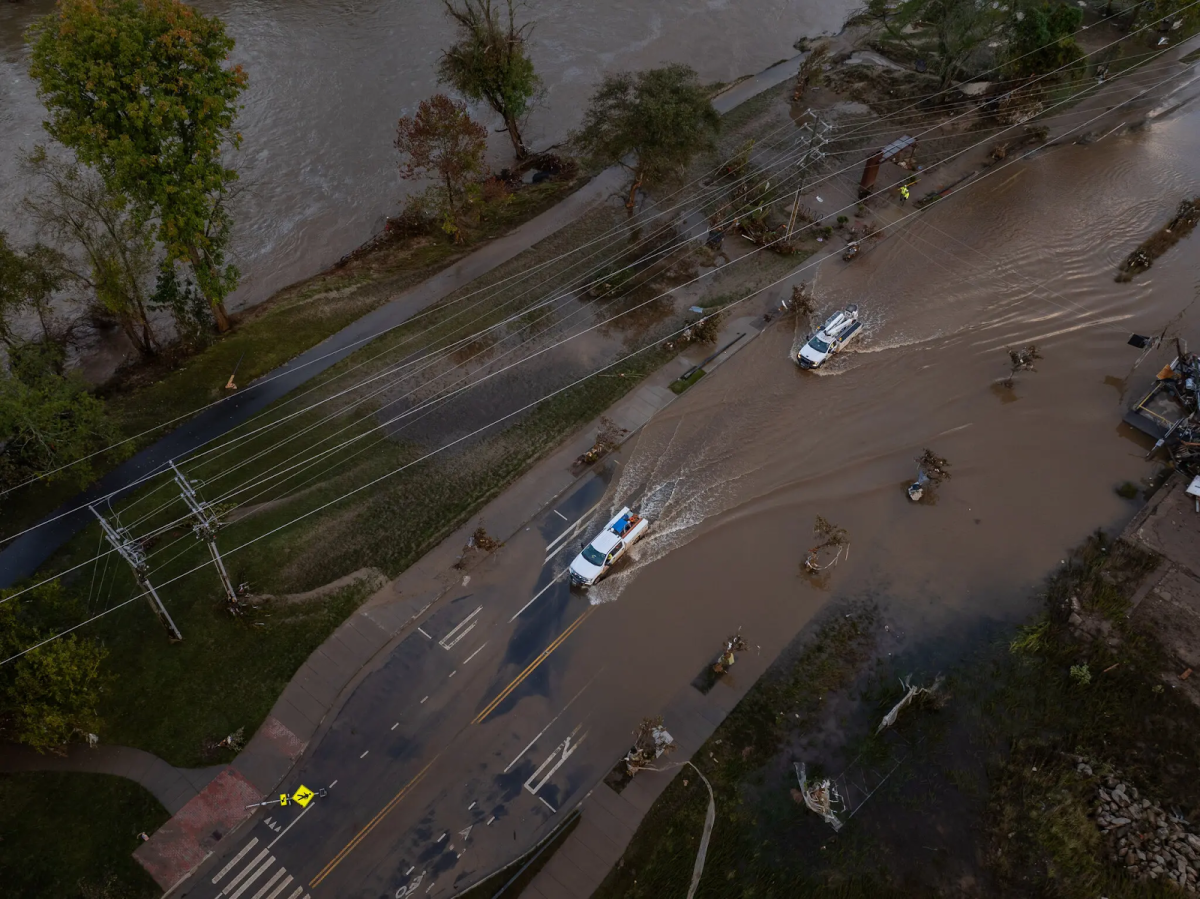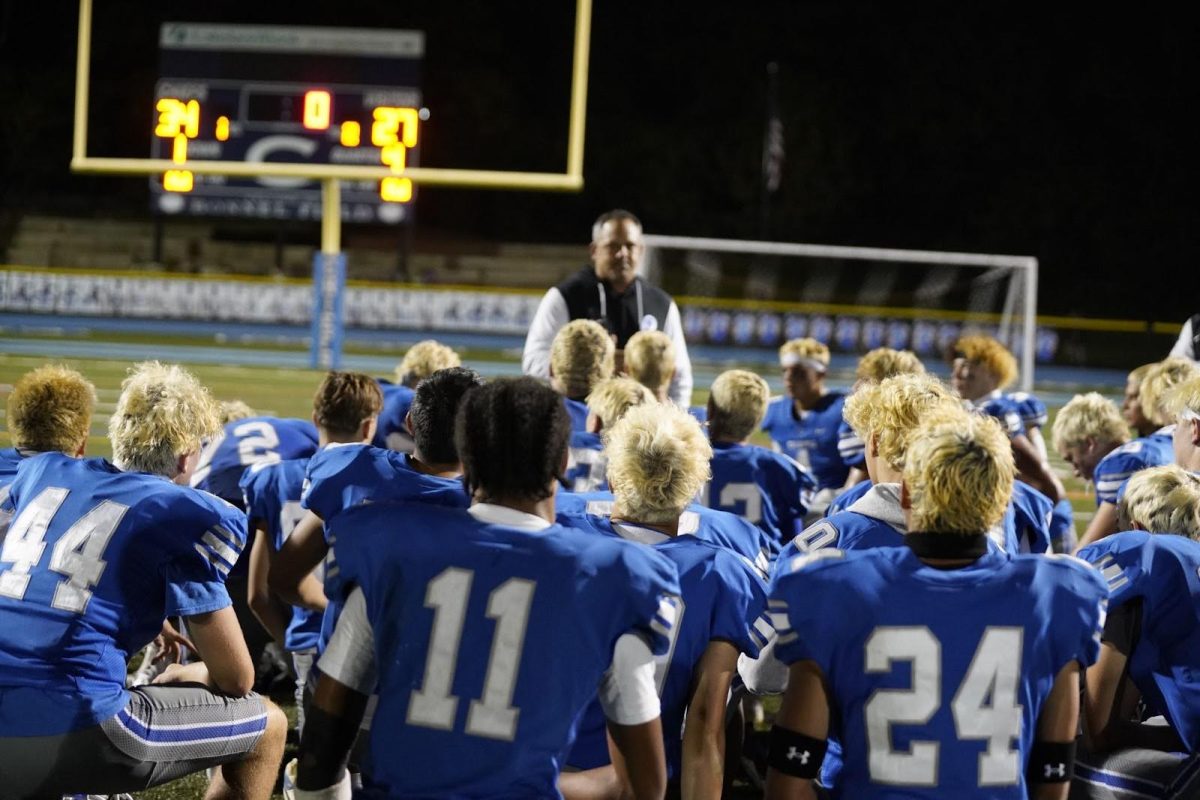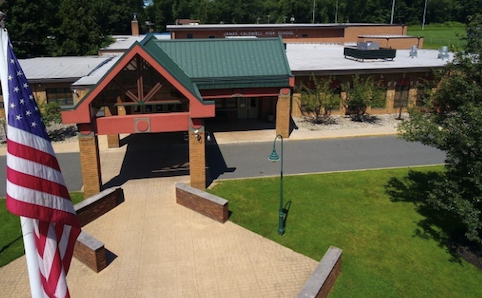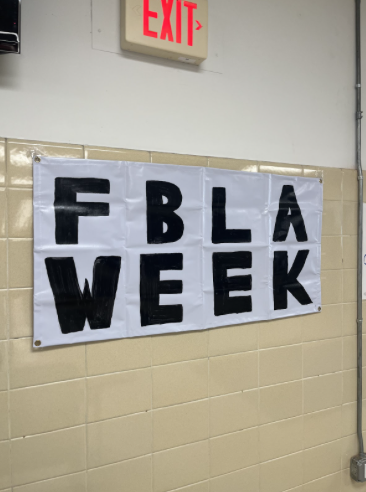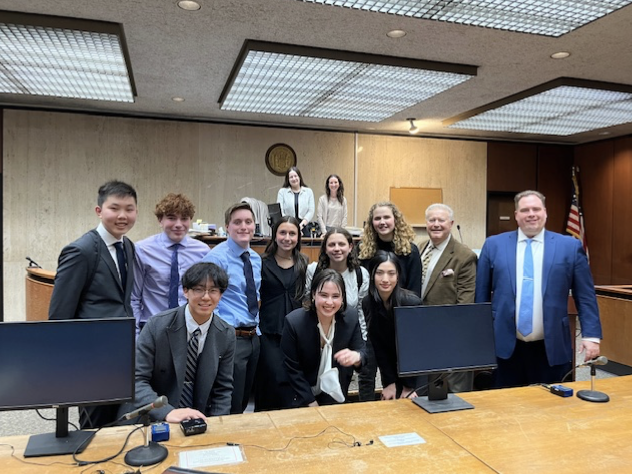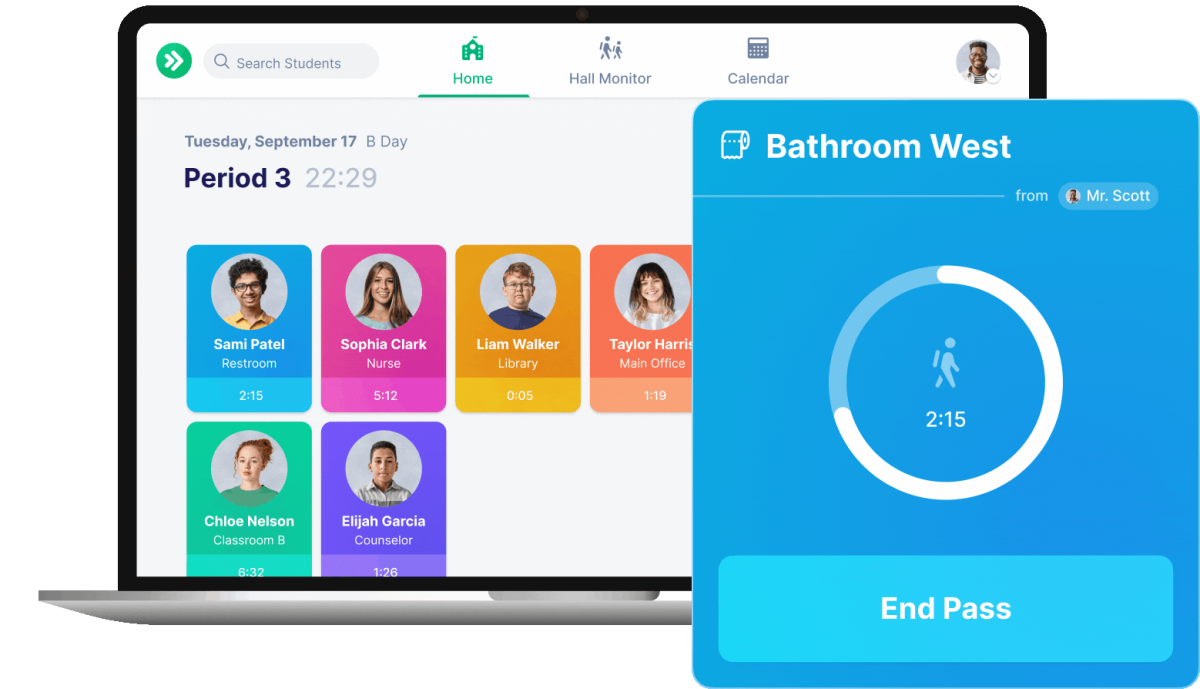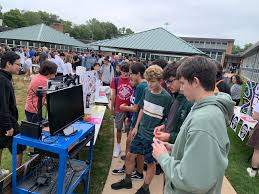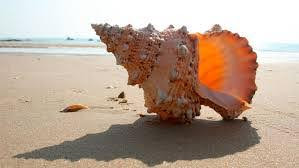Asheville, North Carolina, once touted as a “climate haven,” faced a harsh reality when Hurricane Helene struck on Thursday, September 25th. Despite being 500 miles from the storm’s initial landfall, Asheville became a focal point of the disaster. Floodwaters tore through neighborhoods, sweeping away cars and homes, while mudslides buried key highways, leaving communities isolated and devastated.
Hurricane Helene’s remnants wreaked havoc across the Southeast, with floods and landslides destroying infrastructure and displacing residents. Roads, power lines, cell phone towers, and water treatment plants were damaged, leaving thousands without access to essential services. As state and federal agencies rushed to deliver supplies, other teams fanned out to search for hundreds of people still missing. North Carolina’s Governor Roy Cooper called the crisis an “unprecedented tragedy” (New York Times).
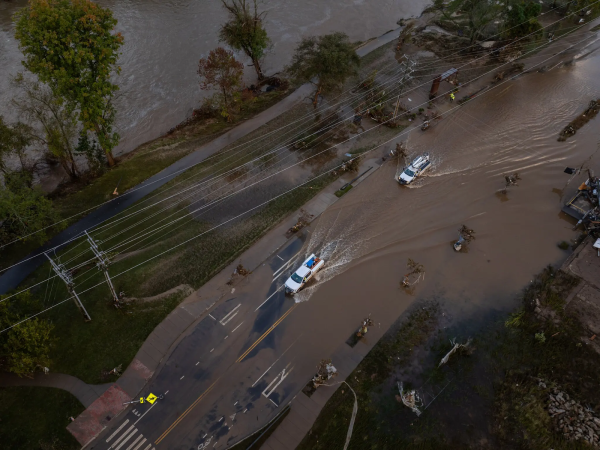
(Flooding along the River Arts District, where the French Broad River overflowed in Asheville, North Carolina) Photo courtesy of New York Times
Biltmore Forest, a township known for its natural beauty and strict tree preservation policies, was not spared. The trees that once provided shade became hazards, with many uprooted by the storm. Residents who moved to the region to avoid the effects of climate change instead found themselves facing the opposite. “There’s no doubt that we can no longer accurately estimate the impact of climate change wherever we are,” said a local resident (The New Yorker).
In the midst of this crisis, I tuned into C-SPAN on October 5th to hear Vice President Kamala Harris’s response, especially as she competes in the presidential race. During her visit to Charlotte, North Carolina, she gave her remarks before receiving a briefing about recovery efforts following Hurricane Helene. At the time of this event, the death toll from the storm had risen to at least 225 across six states. The vice president reflected on the situation, saying, “These moments of crisis bring out some of the best of who we can be and who we are,” praising the collaborative efforts at the federal, state, and local levels (C-SPAN).
As Hurricane Helene tore through several Southern states last week, the storm also upended carefully laid plans for the November election, including in North Carolina, Georgia and Florida, where the presidential race and control of the Senate may be decided. Florida Governor Ron DeSantis signed an executive order to accommodate voters in affected areas, allowing early voting sites to be relocated and absentee ballots to be mailed to alternate addresses. It acknowledges that “a significant number of early voting sites and polling locations have been damaged or otherwise rendered unusable, a significant number of voters have been displaced, and a significant number of poll workers may be unavailable for the foreseeable future” (New York Times). The order, which is similar to one that DeSantis signed after Hurricane Ian hit the state in September 2022, included provisions allowing county election supervisors to relocate polling places or designate new ballot collection locations after the normal deadline and to accept voters’ requests to send mail ballots somewhere other than the home address they had on file.
It is not yet clear how election procedures may be affected in North Carolina, where the hurricane devastated communities in the mountainous western part of the state. The damage could make some polling places inaccessible. The mailing of absentee ballots in North Carolina had already been delayed because of a last-minute state Supreme Court ruling that ordered election officials to remove Robert F. Kennedy Jr.’s name, which required millions of ballots to be reprinted. Due to that delay, more ballots may have still been in the mail when the hurricane hit and disrupted postal service.
In Georgia, county officials may begin mailing absentee ballots on Monday, and early voting is scheduled to begin on Oct. 15. Georgia’s state office was confident that early voting would start as planned, even in the storm-rocked regions of the state. “My office is working hard to make sure the election workers in the affected counties are safe, that their equipment is undamaged and secure, and that their early voting locations will be functional by the time early voting starts,” the secretary of state, Brad Raffensperger, said in a statement on Wednesday (New York Times).
In the aftermath of the storm, misinformation spread rapidly, with conspiracy theories ranging from weather manipulation claims to accusations of misappropriated disaster funds. False rumors suggested Helene was engineered to access regional lithium deposits, while others accused the Biden administration of using federal disaster funds to help migrants in the country illegally. Congresswoman Marjorie Taylor Greene posted on X Thursday night: “Yes they can control the weather. It’s ridiculous for anyone to lie and say it can’t be done” (Reuters).
It’s election season, so maybe it’s no surprise that the federal response to damage in Hurricane Helene’s wake is a hot topic, especially on social media. However, some of the conspiracies, misinformation, and rumors that have circulated are extraordinary– enough so that the Federal Emergency Management Agency (FEMA) has addressed them directly. The agency even had to explain that FEMA can’t seize your land if it’s “deemed unlivable” due to rumors about confiscating private donations (NPR).
With the presidential election between Former President Trump and Vice President Kamala Harris just over a month away, both Republicans and Democrats acknowledge that rumors are becoming a serious issue. White House officials on Friday accused some leaders and media sources of intentionally peddling rumors to divide Americans in a way that could harm disaster relief efforts. A White House memo states, “disinformation of this kind can discourage people from seeking critical assistance when they need it most. It is paramount that every leader, whatever their political beliefs, stops spreading this poison” (Reuters). FEMA responded to the rise in disinformation by setting up a rumor control page, attempting to quell the claims circulating online.
Nevertheless, along with echoes of this misinformation, less politicization and a more nuanced view of the federal response was also found, especially in communities that have been without internet access since Helene raged through the region.
“We’ve been in a bit of an internet black hole down here,” says Mollie Freeman, as she cleaned up her mother-in-law’s flooded home. “We’re just kind of focused on helping each other and just haven’t paid too much attention to it” (NPR).
Volunteers and community drives played a crucial role in filling the gaps left by government assistance. In Jonesborough, Tennessee, and other affected areas, residents focused on helping each other rather than engaging in political debates. “When that stuff becomes the focus, I think we’re worried about the wrong things,” said relief volunteer Tyler King (NPR).
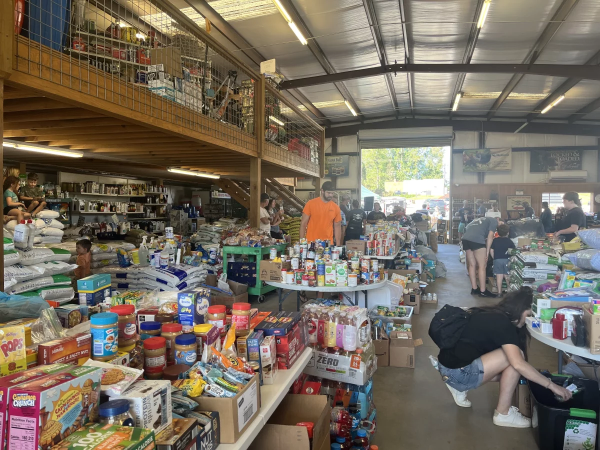
(A farming store has become a warehouse for donated supplies in Mill Spring, North Carolina) Photo courtesy of NPR
Hurricane Helene’s devastation serves as a stark reminder of the unpredictability of climate change and the fragility of even the most prepared communities. The response, both at the governmental and grassroots levels, highlights the importance of unity in the face of disaster. As recovery continues, the hope is that lessons from this catastrophe will lead to better preparedness and stronger, more resilient communities in the future.


